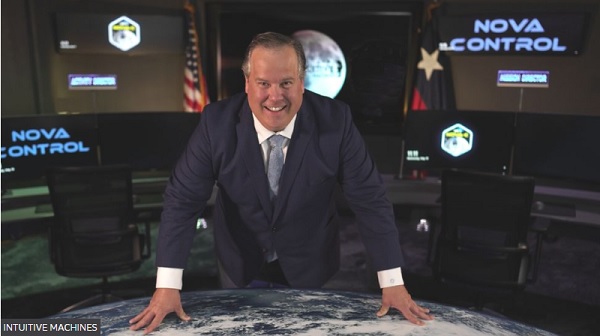
Not many people can say they have a doctorate in interplanetary navigation, but Tim Crain can.
While working on his PhD in Austin, Texas, in the 1990s he hoped one day to work on missions to Mars and in 2000 he landed his dream job with Nasa, at the Johnson Space Center in Houston.
"In 2000, the idea was, we would finish the space station in just a matter of years, and then the next big human spaceflight project would be to move on to Mars," he says.
But things didn't quite work out that way and shortly after he joined Nasa the agency's priorities changed.
"Things took a turn, we lost [the Space Shuttle] Columbia, had the global war on terrorism, so, Mars fell off the table," he explains.
He shifted to another Nasa programme called Constellation, an ambitious plan to return to the Moon and eventually Mars, but by 2010 it too had fallen by the wayside.
"I became a little bit disillusioned that the Moon was no longer an option with Nasa," says Mr Crain.
So, after a decade with Nasa he left to form Intuitive Machines with co-founders Steve Altemus and Kam Ghaffarian.
Their plan was to apply their expertise to complicated engineering projects, which they did for a few years.
But in 2018 an opportunity came along that the partners could not resist.
In April of that year Nasa launched Commercial Lunar Payload Services (CLPS), a programme to commission private companies to take cargo to the Moon.
That cargo would include instruments and devices designed to pave the way for Artemis, Nasa's latest plan to return to the Moon, this time by 2025.
"We said: 'Hey, wait a minute. That's something we could go after,'" remembers Mr Crain.
So, they dropped everything and scrambled to get a proposal together.
"That was a new experience - to write a proposal for a lunar mission of 30 days. And we won, along with two of our competitors Astrobotic and Orbit Beyond and our lives changed," he says.
But winning the contract was only the first step, next came the design and development of a spacecraft that could get to the Moon.
"We quickly discovered we needed to assemble a whole programme - we needed operations, we needed launch system integration, we needed an entire payload integration group.
"When you take that whole thing, we actually have a mini space programme," says Mr Crain.
Starting with nothing more than a blueprint it took Intuitive Machines three years to build their spacecraft, Nova-C.
Their engineers used knowledge of existing space technology and blended that with their own development.
The company even developed its own propulsion system which uses methane and liquid oxygen, a well-tried combination.
It is also a fuel that could, one day, be made in space to power future missions.
"Any place there's carbon and water, two of the most abundant chemicals in the universe, as far as we know. We'll be able to make methane."
"I think that LOX (liquid oxygen) and methane is the propulsion [system] that will drive commerce through the solar system," says Mr Crain.
The spacecraft, Nova-C is capable of transporting a payload of 130kg, but for its first flight is only carrying 80kg.
Mr Crain says that once Nova-C has proven itself, they will build bigger spacecraft. The company has plans for one that can carry a payload of five tonnes.
But before those more ambitious missions, the first launch has to go to plan.
A US spacecraft has not made a soft landing on the Moon since the last of the Apollo missions in 1972. (The LCROSS mission in 2009 deliberately crashed a vehicle into the Moon to examine the material kicked up by the impact.)
Nova-C could change that when it blasts into space atop a SpaceX rocket in the first quarter of 2022.
It will decouple from that rocket after about 18 minutes and head to the Moon on a journey that will take about four days.

